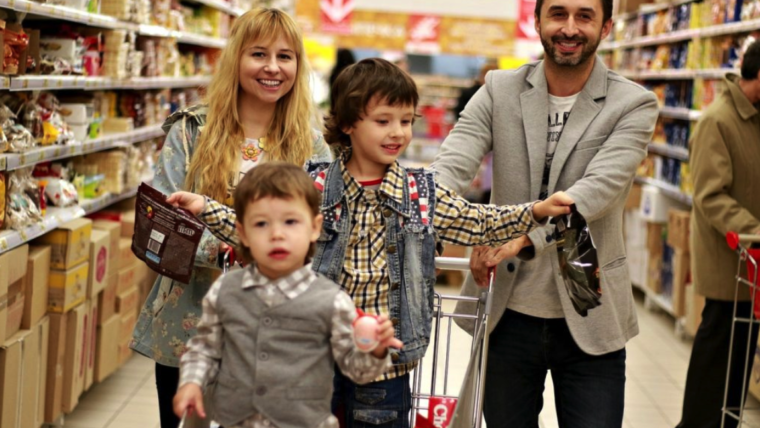If your child is like many of the dozens I have potty trained, you can probably relate to my friend Renée. Her son is just about to turn four and while most of her friends are carrying around posh new handbags, she is still stuck lugging around a diaper bag! Her son Benjamin has Autism.
If you are reading this post, I don’t need to tell you that like your child, Benjamin has a much more difficult time communicating his bathroom needs and sitting long enough to on the potty to ditch those diapers.
I get the same three questions over and over from Autism moms, like you and Renée:
- How do I know when my child is ready to be potty trained?
- How do I convince him to actually sit on the potty?
- How do I get him to tell me he has to go?
Over my nine years of experience with I have found the same strategies effective time and time again for kids on the spectrum.
How do i know when my child is ready to be potty trained?
Knowing when your child is ready to be potty trained can be tough. The easy answer is when they notice they have a dirty diaper. When kids are ready to be potty trained, they will typically take off their diapers or tug at them after urinating or defecating. Or, to most parent’s disdain, they will take off their diaper and hide and poop behind the couch. If this has happened to you, it is probably time to potty train your child.
However, there are few really important prerequisite skills that kids must at least be able to do to some degree in order for them to be successful potty training. The first is to have some basic imitation skills, some ability to follow directions, some ability to pull their pants down and the ability to sit for a few minutes at a time. Electronic devices can be really helpful with the sitting part!
It is important to know, your child doesn’t have to do all of these things perfectly but the better they are at these important skills, the more successful they will be. The key is to start practicing them BEFORE potty training!
How do I convince him to actually sit on the potty?
Sitting down to use the potty for the first time can be scary for any child but for children with Autism, coping with this new routine can be even more difficult. Many children with Autism do not like change and the are very resistant to using the potty for the first time. They will often cry and refuse to sit all together.
Luckily, there are a few things you can do to help! I highly recommend the use of stories about potty training, especially social stories. They help children with Autism know what is required of them and cope with the new routine. This will help ease their anxiety and will even be fun. Social stories are generally written in a specific way by professionals and come with guidelines on how to use them.
As gift for you, I have included one for free right in this post for our subscribers!
Another that can help children to be successful when learning to use the potty is to bring any of their favorite toys or even tablets into the bathroom with them to encourage them to sit. The truth is, when kids are first starting to use the potty, they will spend a lot of time on the toilet. Keep it fun. Brining your child’s favorite toys with them will create a positive association with going to the bathroom and you will be met with much less resistance.
Finally, get a big box or jar and fill it with lots of little toys or snacks and let your child pick it out. Call it the potty box/jar. Let your child pick out his favorite thing to put in there and decorate it together. You don’t need to go crazy. We are not talking about giving them a new puppy — you would be surprised what a kid will do for an M & M. The important things is it is something they really want AND that they have NO ACCESS to it outside of potty training. This will make them much more likely to want to go to the potty for it!
How do I get him to tell me he has to go?
I will admit, getting your child is tell you he has to go to the bathroom is the hard part, especially if he has limited language. The most effective strategy I have found is to use a timer and picture of a potty. Teach your child to use the bathroom every time the timer goes off. Let the timer and not you be what cues them to go to the bathroom. It is much easier to fade than you telling him to go. It will take time but eventually, you will find your child going on his own even before the time goes off.
They actually sell really cool “Potty Watches” that kids can wear that will remind them to go to the potty every 30 or 60 minutes. Some kids with sensory aversions have a hard time keeping them on, but most kids love them and have had great results. I have included a link to the one I typically use with my clients.
Another strategy that has worked very well for many of the families that I work with is to use a voice button on the door of the bathroom so that when your child pressed the button it says, “I have to go to the bathroom.” The best way to do this is just to use one of the buttons that are typically out in talking stuffed toys! It is a super effective and economical way of providing your child with an alternative augmentative communication (AAC). In fact, you can use these for almost anything– not just potty training! You can put them on your refrigerator to have your child say, “I am hungry” or on the door to say, “Let’s go outside.” These are the ones I normally use.
If you follow these simple strategies, I promise they will help your child with Autism. It may take time but I have used them for years and have never yet met a child they don’t work for. Hang in there– you will be able to ditch the diaper bag soon!
Oh- Don’t forget to download the FREE social story I have put together just for you!



